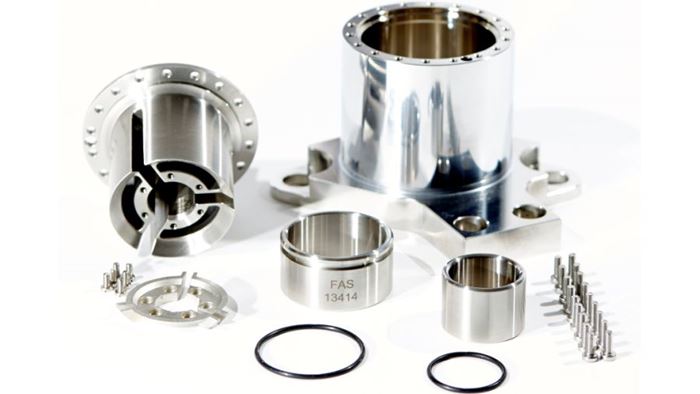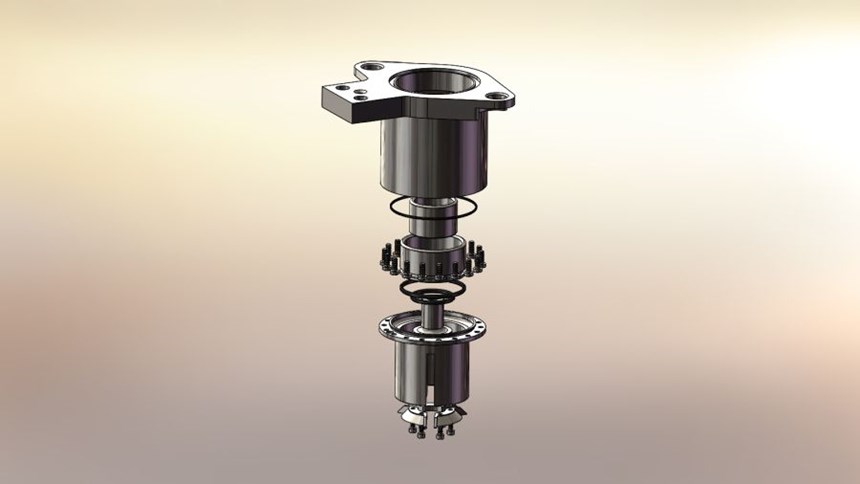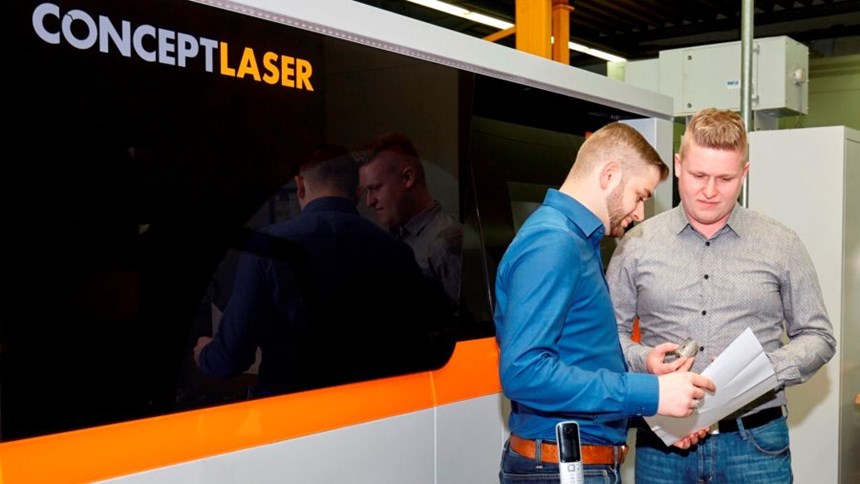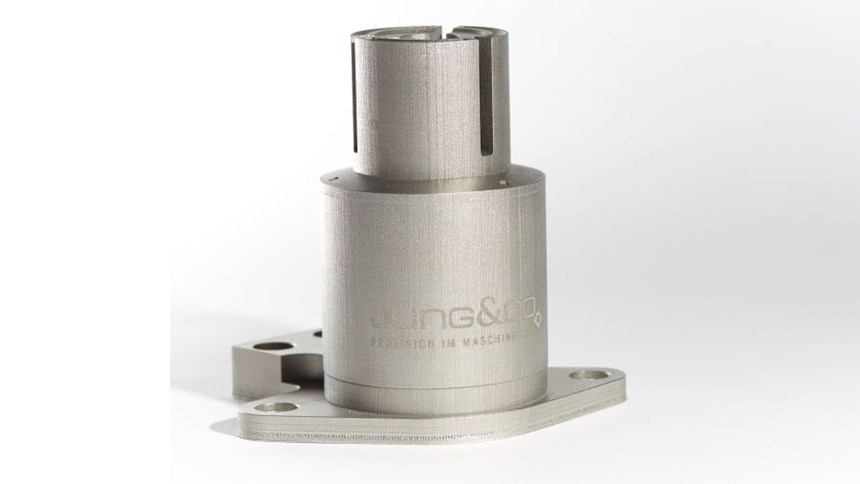Metal Additive Manufacturing Enables Spare Parts on Demand for Beverage Filling Plants
The ability to 3D print metal parts for the beverage filling industry as needed saves cost over conventional methods.
In the food industry, the plants that fill bottles and cans with beverages must be flexible and fast. Downtime at a beverage filling plant is costly, so it is imperative to replace broken parts as soon as possible. Jung & Co. Gerätebau GmbH, a Germany-based manufacturer specializing in stainless steel components, relies on additive manufacturing to ensure that spare parts for beverage filling plants are available quickly and on-demand.
Jung & Co. is a processor of stainless steel that provides production planning, quality assurance and subassembly production. In addition to the food and beverage industry, the company also serves the pharmaceutical, chemical engineering, plant engineering, aviation and fossil fuel extraction industries. For its production work, Jung & Co. uses CNC machine tools as well as an M2 Cusing Multilaser additive manufacturing system from Concept Laser.
“We deliver stainless steel solutions across all processes and consistently focused on the application,” says Thomas Lehmann, managing director of Jung & Co. “The parts or assemblies that we produce are conventionally machined, manufactured in hybrid fashion or completely additively.”
For its beverage filling plant customers, Jung & Co. recognizes that speed is critical. Production rates ranging from 40,000 to 80,000 bottles or cans per hour are common in these facilities, and profitability quickly diminishes when a plant must be shut down. Depending on the size and output of the entire filling line, an hour of lost production may cost from around 4,000 to around 30,000 euros. In a worst case scenario, it may take several days to find the fault, request a spare part, ship and install it.
The time and cost of manufacturing these spare parts is an added burden. One example cited by Lehmann is a filler valve for a can filling plant. When manufactured by conventional means, the valve assembly consists of seven components milled or turned from stainless steel 1.4404. Following machining, the components must have seals applied and be fitted manually. Manufacturing the assembly by conventional means takes 8 to 15 weeks, including the procurement of a required precision cast part.
Previously, Jung & Co. would have kept a spare valve assembly in storage so that the plant could be up and running quickly in the event of a failure. However, with the metal additive manufacturing capacity provided by the Concept Laser M2, this is no longer necessary.
The M2 Multilaser system uses two 400-watt lasers to fuse fine metal powder, which then cools and solidifies to form a part. Each layer is between 15 and 500 microns thick. Following the build, the component is moved into a handling chamber that is physically separate from the process chamber. This two-chamber design was a key selling point for Jung & Co. as the company says it makes the machine more convenient to use and safer by containing the powdered metal.
To make the best use of this additive manufacturing technology, Jung & Co. redesigned the can filler valve using topology optimization. The resulting can filler valve was subjected to intensive load tests to ensure that it could withstand required load demands.
The redesigned can filler valve is just one piece that can be manufactured in one operation on the M2, meaning there is no longer any need for the seals and interfaces that are necessary in the conventionally produced version. The additively manufactured component is 35 percent lighter than the conventionally produced version and avoids cavities, which are a potential source of contamination in the food industry. It takes only one week to manufacture the part additively.
“In principle, this means we can manufacture spare parts on demand and then deliver them on time when the demand suddenly arises,” Lehmann says. The 3D-printed can filler valve is cheaper than a conventional solution, he says, and spare parts no longer need to be purchased in advance and kept in storage, tying up capital.
Jung & Co. is now looking into other uses of metal additive manufacturing technology, such as integrating temperature, cooling or sensors into parts made additively. The company is also working to develop a fully digital process chain for spare parts.
“We will shortly be employing a mobile laser scanner,” Lehmann says. “This will enable us to measure the part that needs to be replaced in situ at the customer’s premises and then construct a fully digital process chain, from the scan to the 3D part ready for installation.”
Related Content
This Drone Bird with 3D Printed Parts Mimics a Peregrine Falcon: The Cool Parts Show #66
The Drone Bird Company has developed aircraft that mimic birds of prey to scare off problem birds. The drones feature 3D printed fuselages made by Parts on Demand from ALM materials.
Read MoreHow Norsk Titanium Is Scaling Up AM Production — and Employment — in New York State
New opportunities for part production via the company’s forging-like additive process are coming from the aerospace industry as well as a different sector, the semiconductor industry.
Read MoreActivArmor Casts and Splints Are Shifting to Point-of-Care 3D Printing
ActivArmor offers individualized, 3D printed casts and splints for various diagnoses. The company is in the process of shifting to point-of-care printing and aims to promote positive healing outcomes and improved hygienics with customized support devices.
Read MoreBeehive Industries Is Going Big on Small-Scale Engines Made Through Additive Manufacturing
Backed by decades of experience in both aviation and additive, the company is now laser-focused on a single goal: developing, proving and scaling production of engines providing 5,000 lbs of thrust or less.
Read MoreRead Next
3D Printed Polymer EOAT Increases Safety of Cobots
Contract manufacturer Anubis 3D applies polymer 3D printing processes to manufacture cobot tooling that is lightweight, smooth and safer for human interaction.
Read MoreBike Manufacturer Uses Additive Manufacturing to Create Lighter, More Complex, Customized Parts
Titanium bike frame manufacturer Hanglun Technology mixes precision casting with 3D printing to create bikes that offer increased speed and reduced turbulence during long-distance rides, offering a smoother, faster and more efficient cycling experience.
Read MoreAlquist 3D Looks Toward a Carbon-Sequestering Future with 3D Printed Infrastructure
The Colorado startup aims to reduce the carbon footprint of new buildings, homes and city infrastructure with robotic 3D printing and a specialized geopolymer material.
Read More
.jpg;width=70;height=70;mode=crop)
























